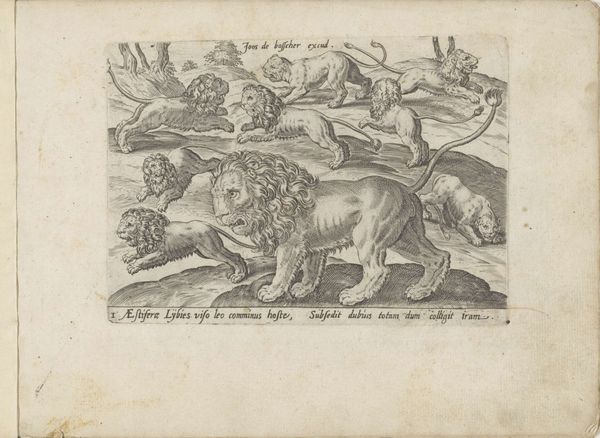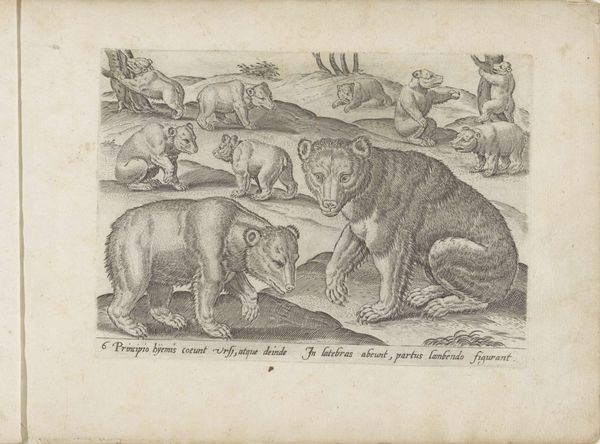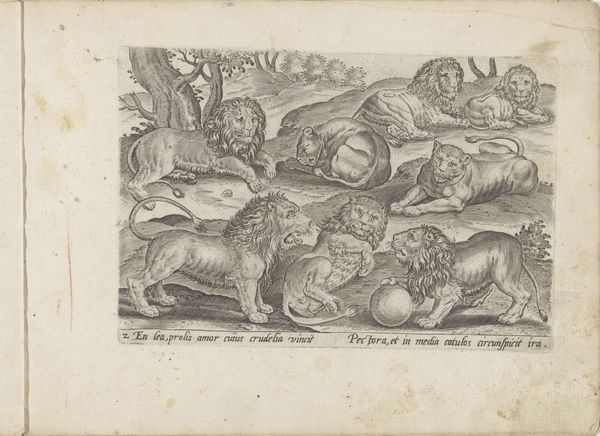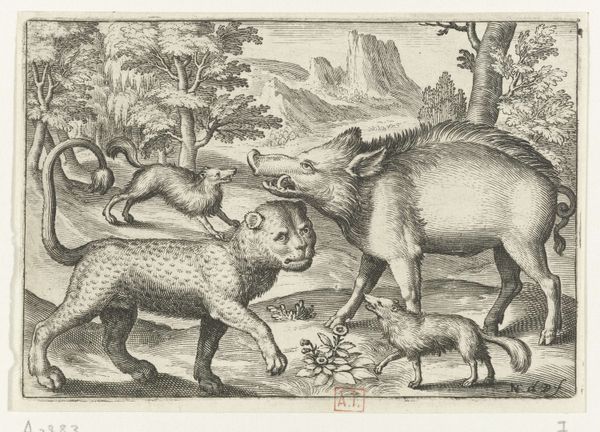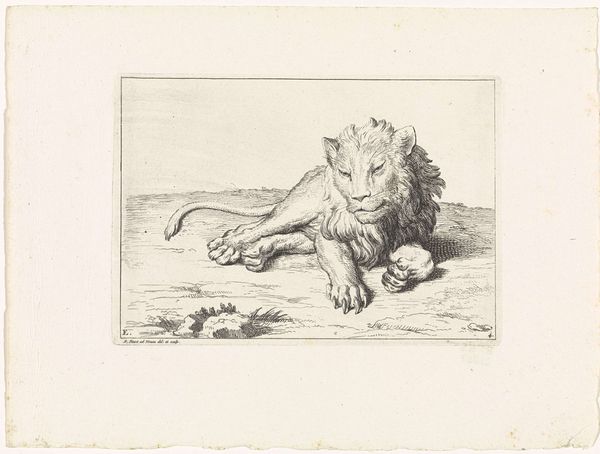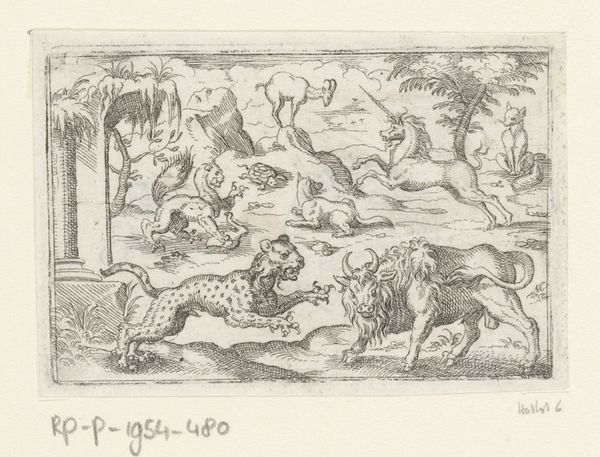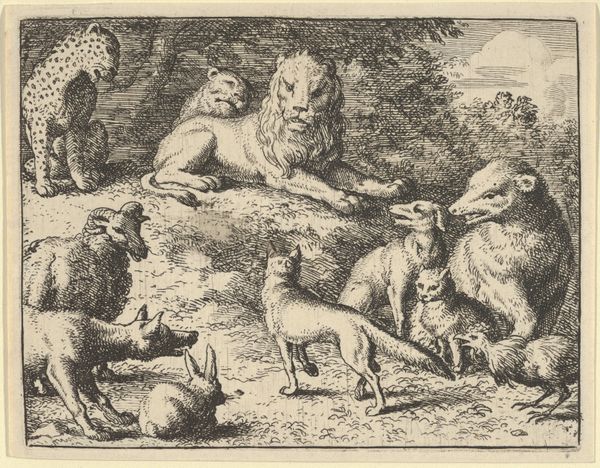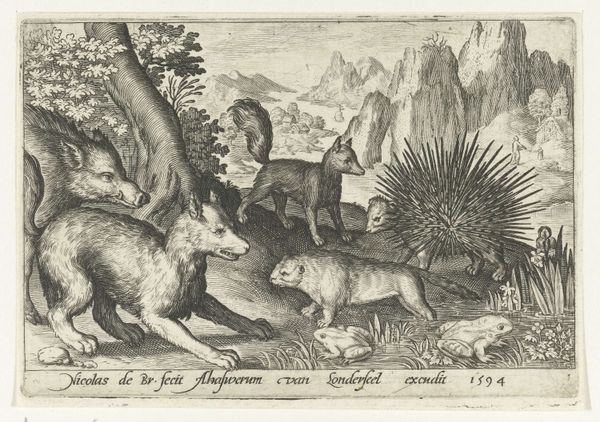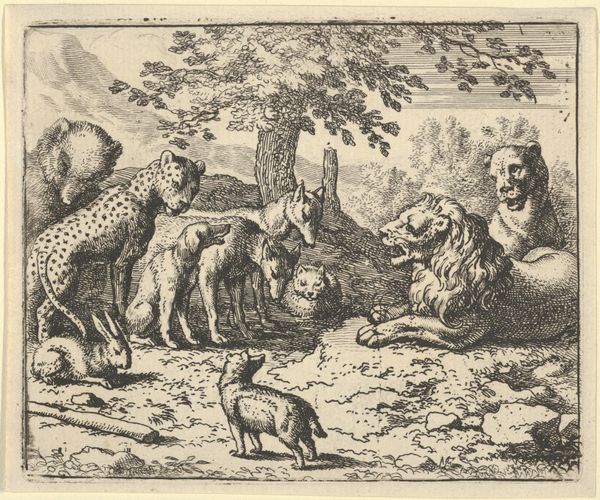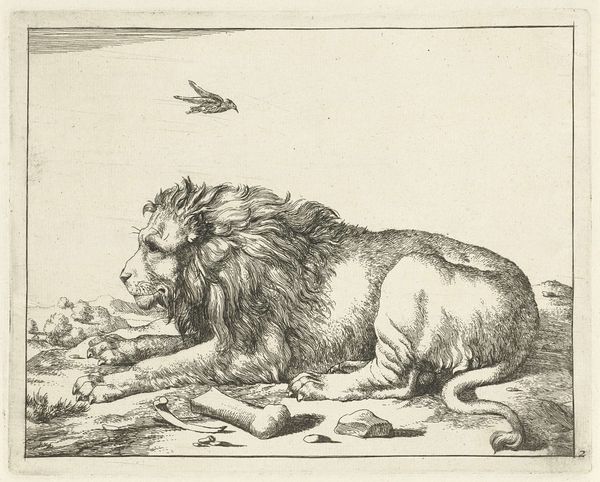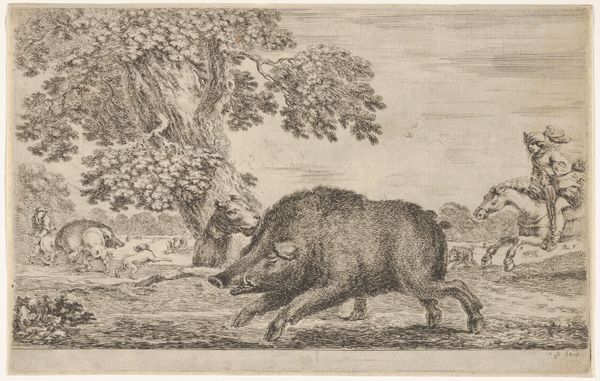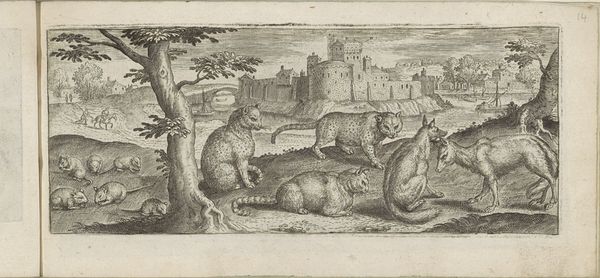
print, engraving
#
animal
# print
#
figuration
#
11_renaissance
#
northern-renaissance
#
engraving
Dimensions: height 125 mm, width 177 mm
Copyright: Rijks Museum: Open Domain
Editor: So, this is "Zes panters," or "Six Panthers," an engraving dating back to sometime between 1581 and 1600, by an anonymous artist. It has an interesting layout. How do you interpret this work, particularly considering its place in the Rijksmuseum collection? Curator: This print isn’t simply a benign representation of animals; it's deeply embedded in the social and political currents of its time. Note the Latin inscription. Prints like this often served an educational purpose, particularly in a burgeoning era of exploration and colonialism. How do you think the depiction of these animals contributed to the era’s broader narratives? Editor: Well, they do look rather exotic, perhaps reinforcing the idea of a world "out there" to be discovered and conquered. Curator: Exactly. And that’s where things become problematic. The “discovery” of these animals, visually represented in print, was part of a larger project of subjugation. By classifying and depicting these panthers, the print subtly asserts a form of European dominance over the natural world and, by extension, the lands from which they came. What do you make of their slightly unnatural features? Look at the scaly tails! Editor: That's bizarre! They look reptilian, almost like they’ve been "monsterized". Maybe it feeds into fears about the unknown, justifying colonial interventions. Curator: Precisely. The “monsterization,” as you aptly put it, dehumanizes and 'otherizes' both the animal and its indigenous environment. This print functions as a form of visual rhetoric, justifying exploitation and control under the guise of knowledge and understanding. The visual othering served political motives. Editor: I hadn't considered the political implications of a simple animal print! I am glad I can use my art historical knowledge to analyse images in their original context. Curator: It's vital that we use art history and theory to unveil hidden narratives that endorse harmful, unequal practices. Let us actively challenge the colonial gaze.
Comments
No comments
Be the first to comment and join the conversation on the ultimate creative platform.
